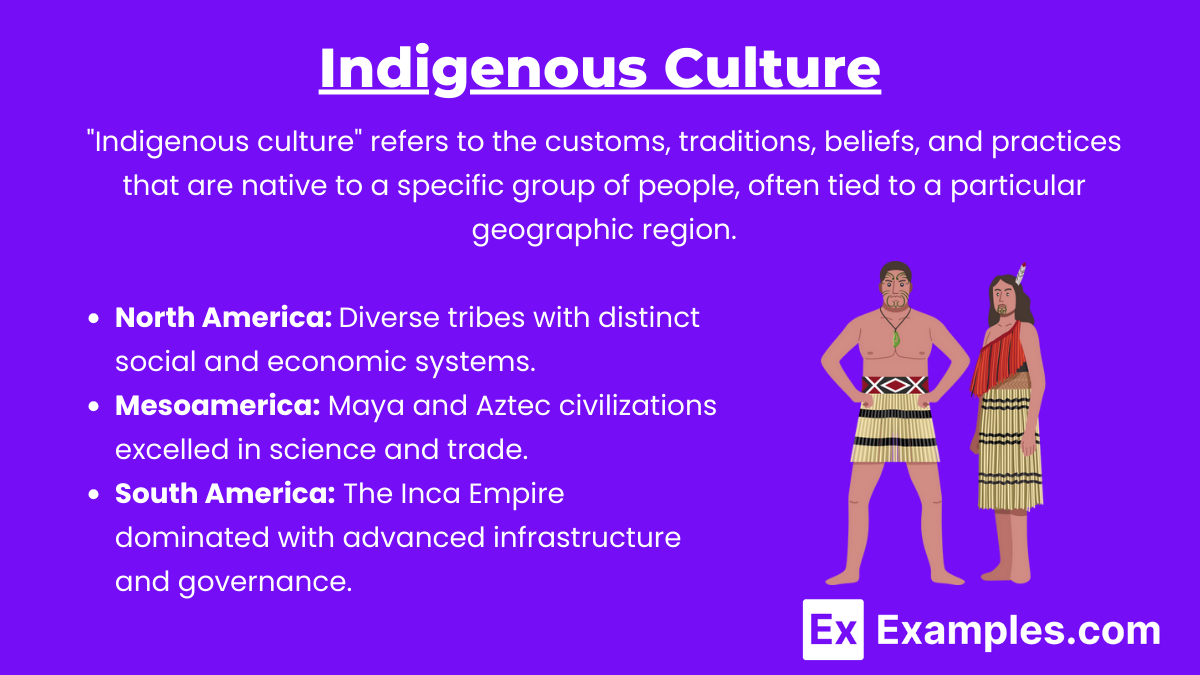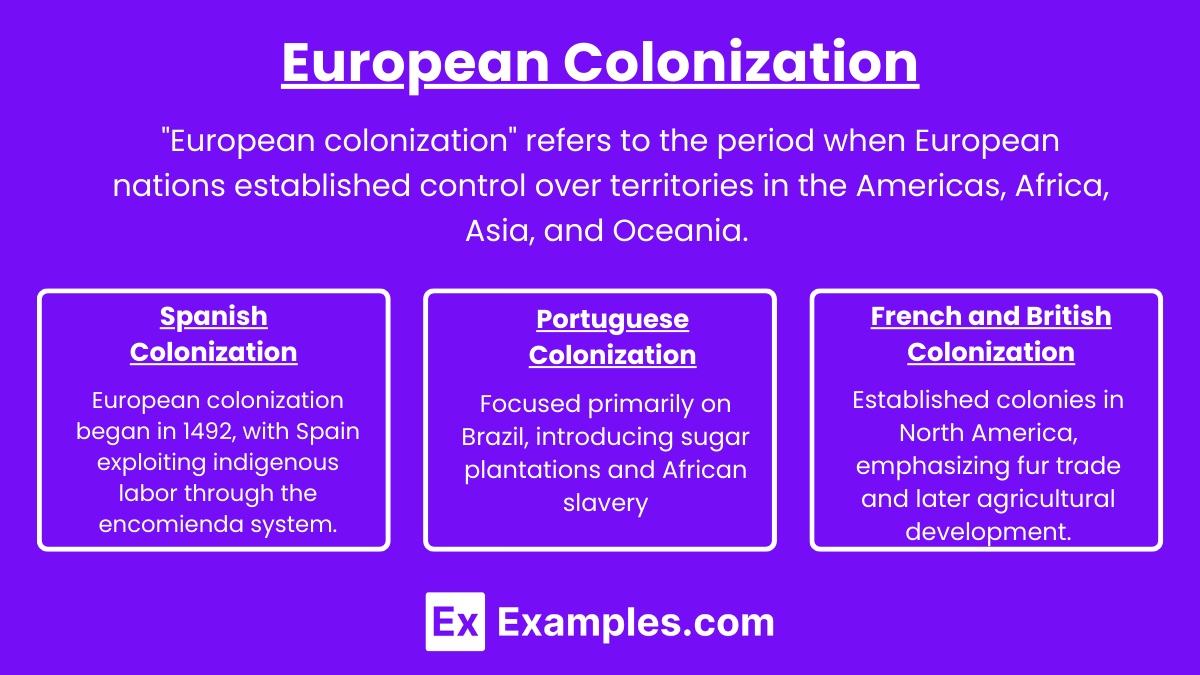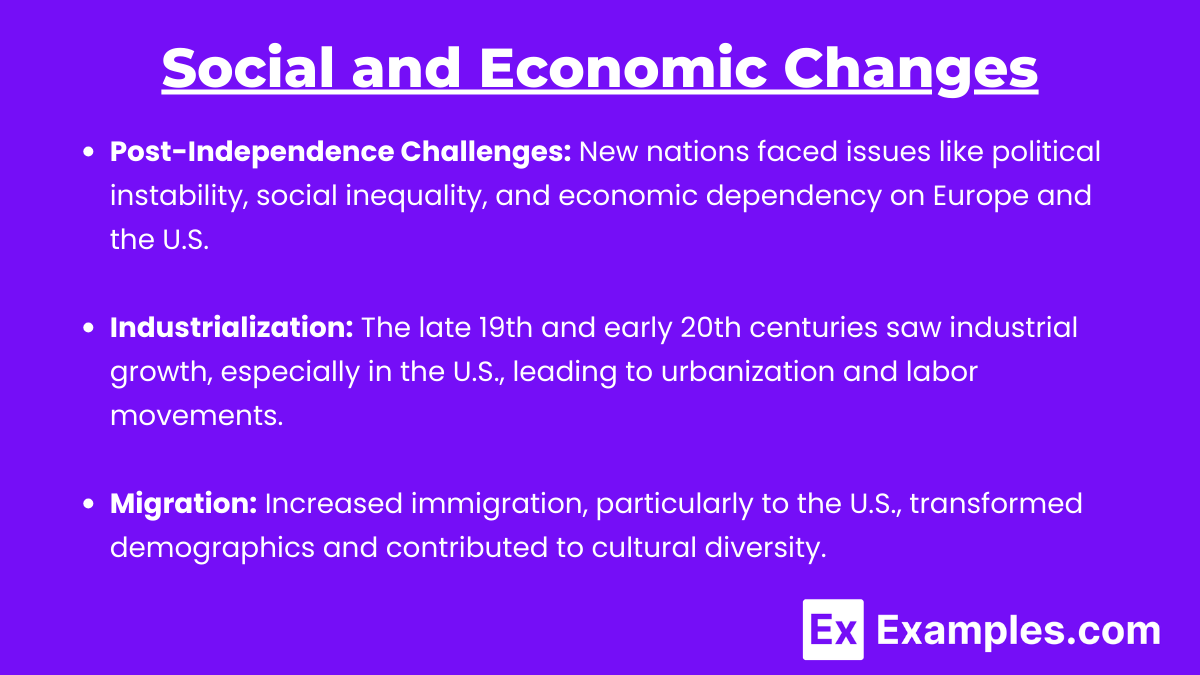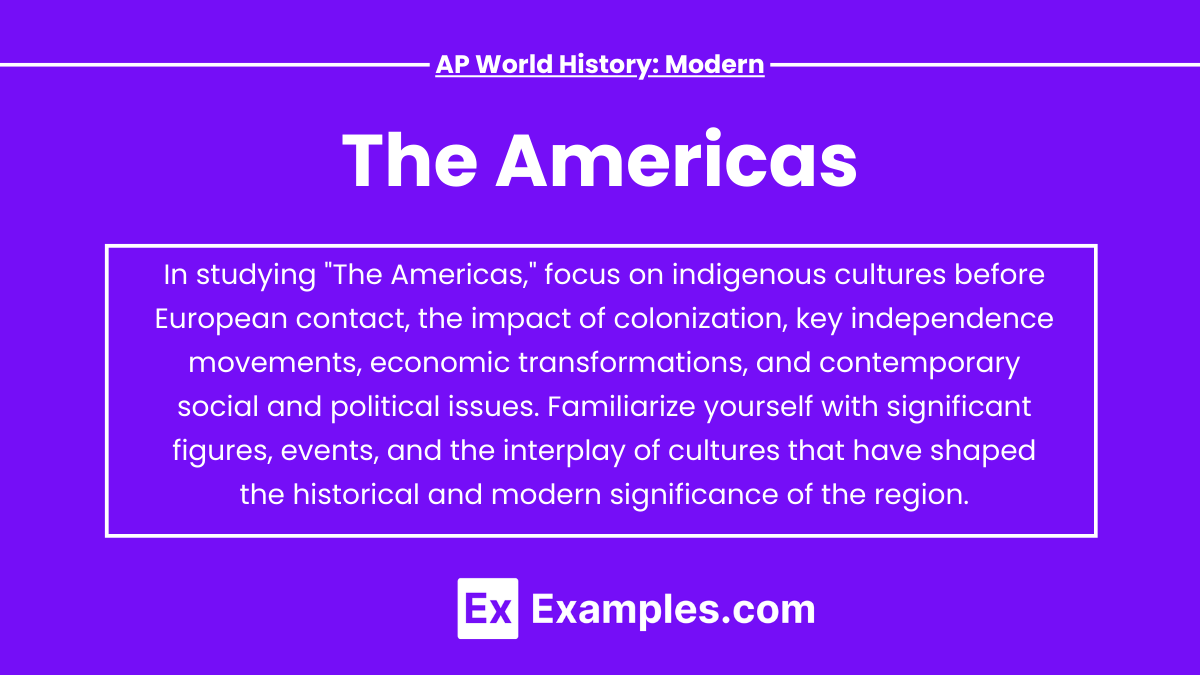The Americas, encompassing North, Central, and South America, boast a rich tapestry of history shaped by diverse indigenous cultures, European colonization, and revolutionary movements. From the advanced civilizations of the Maya and Inca to the establishment of powerful nations like the United States and Brazil, the region has undergone significant transformations. The interplay of cultures, economic systems, and political ideologies has created a unique legacy that continues to influence global dynamics and address contemporary challenges in the modern world.
Learning Objectives
In studying “The Americas” for AP World History: Modern, you should analyze the diversity of indigenous cultures and their social, economic, and belief systems before European contact. Evaluate the impact of European colonization, focusing on changes brought about by systems like encomienda. Investigate key figures and events in the independence movements, such as the American and Haitian revolutions, while understanding Enlightenment influences. Explore the economic transformations during the 19th and 20th centuries, including industrialization and global trade, and assess contemporary challenges like inequality and political instability.
1. Indigenous Cultures

“Indigenous culture” refers to the customs, traditions, beliefs, and practices that are native to a specific group of people, often tied to a particular geographic region.
- North America: Home to diverse cultures such as the Iroquois Confederacy, Plains Indians, and Pacific Northwest tribes. Each group had unique social structures, governance, and economies (e.g., hunting, agriculture).
- Mesoamerica: Civilizations like the Maya and Aztec thrived, characterized by advanced mathematics, astronomy, architecture, and trade networks.
- South America: The Inca Empire dominated the Andes, known for its extensive road systems, agricultural innovations, and centralized governance.
2. European Colonization

“European colonization” refers to the period when European nations established control over territories in the Americas, Africa, Asia, and Oceania. They imposed political, economic, and cultural dominance, often exploiting resources and indigenous populations for their own benefit.
- Spanish Colonization: Initiated by Christopher Columbus in 1492, leading to the establishment of New Spain. The Spanish employed encomienda systems, exploiting indigenous labor.
- Portuguese Colonization: Focused primarily on Brazil, introducing sugar plantations and African slavery.
- French and British Colonization: Established colonies in North America, emphasizing fur trade and later agricultural development.
3. Independence Movements

- Influence of Enlightenment Ideas: Concepts of liberty, equality, and democracy inspired revolutions throughout the Americas.
- Key Revolutions:
- American Revolution (1775-1783): Resulted in the establishment of the United States, promoting republicanism.
- Haitian Revolution (1791-1804): Led to the first successful slave revolt, creating Haiti as a free republic.
- Latin American Wars of Independence (1808-1826): Figures like Simón Bolívar and José de San Martín led movements against Spanish rule.
4. Social and Economic Changes

- Post-Independence Challenges: New nations faced issues like political instability, social inequality, and economic dependency on Europe and the U.S.
- Industrialization: The late 19th and early 20th centuries saw industrial growth, especially in the U.S., leading to urbanization and labor movements.
- Migration: Increased immigration, particularly to the U.S., transformed demographics and contributed to cultural diversity.
Examples
Example 1 : The United States
The United States is a diverse nation characterized by its democratic government, economic power, and cultural influence. Established after the American Revolution, it has evolved into a global leader in technology, finance, and culture. The U.S. is known for its melting pot of cultures, driven by immigration from around the world. Key events, such as the Civil Rights Movement, have shaped its social landscape and ongoing discussions about equality and justice.
Example 2 : Brazil
Brazil, the largest country in South America, is known for its vibrant culture, rich biodiversity, and economic potential. Following independence from Portugal in 1822, Brazil underwent significant changes, including the abolition of slavery in 1888 and the establishment of a republic in 1889. Today, Brazil is a major player in global agriculture and is famous for its Carnival celebrations, samba music, and the Amazon rainforest, which is vital to global ecology.
Example 3 : Mexico
Mexico boasts a rich history influenced by ancient civilizations like the Aztecs and Mayans, as well as Spanish colonization. Its modern identity is shaped by a blend of indigenous and Spanish cultures. Mexico is known for its contributions to art, cuisine, and music, as well as its struggles with political corruption and drug-related violence. The North American Free Trade Agreement (NAFTA) has also played a significant role in its economic relations with the United States and Canada.
Example 4 : Canada
Canada is recognized for its vast landscapes, multicultural population, and strong social policies. With a history marked by British and French colonization, Canada achieved confederation in 1867. Today, it stands out for its commitment to multiculturalism and human rights, as well as its natural resources and technology sector. Canada’s relationship with the U.S. is significant, involving trade agreements and environmental partnerships.
Example 5 : Argentina
Argentina, located in South America, is known for its diverse geography, from the Andes mountains to the Pampas plains. Following independence from Spain in 1816, Argentina has experienced periods of economic prosperity and political turmoil, including military dictatorships. Today, Argentina is famous for its tango music and dance, beef production, and rich literary heritage. The country faces ongoing economic challenges but remains a key player in regional politics.
Multiple Choice Questions
Question 1
Which event marked the beginning of the American Revolution?
A) The Boston Tea Party
B) The signing of the Declaration of Independence
C) The battles of Lexington and Concord
D) The Treaty of Paris
Answer: C) The battles of Lexington and Concord
Explanation: The battles of Lexington and Concord, fought on April 19, 1775, are often considered the beginning of the American Revolution. These confrontations between British troops and colonial militias marked the start of armed conflict, leading to the colonies’ fight for independence. The Boston Tea Party (A) was a protest against British taxation, while the Declaration of Independence (B) was proclaimed later, in 1776. The Treaty of Paris (D) formally ended the war in 1783.
Question 2
What was a significant consequence of the Haitian Revolution?
A) The spread of slavery in the Americas
B) The establishment of the first independent black republic
C) The continuation of French colonial rule
D) The unification of South American countries
Answer: B) The establishment of the first independent black republic
Explanation: The Haitian Revolution (1791-1804) resulted in Haiti becoming the first independent black republic in the world. Led by Toussaint Louverture and later Jean-Jacques Dessalines, the revolution successfully overthrew French colonial rule and abolished slavery. This event inspired other movements for independence across Latin America. Options A and C are incorrect because the revolution opposed slavery and ended French colonial control. D is also incorrect as it does not relate to Haiti specifically.
Question 3
Which treaty ended the Mexican-American War and resulted in significant territorial gains for the United States?
A) Treaty of Guadalupe Hidalgo
B) Treaty of Paris
C) Adams-Onís Treaty
D) Treaty of Tordesillas
Answer: A) Treaty of Guadalupe Hidalgo
Explanation: The Treaty of Guadalupe Hidalgo was signed in 1848, formally ending the Mexican-American War. As a result of the treaty, the United States acquired a vast amount of territory, including present-day California, Arizona, New Mexico, Nevada, Utah, and parts of Colorado and Wyoming. The Treaty of Paris (B) ended the American Revolutionary War, the Adams-Onís Treaty (C) settled border disputes with Spain, and the Treaty of Tordesillas (D) divided the New World between Spain and Portugal, all unrelated to the Mexican-American War.


